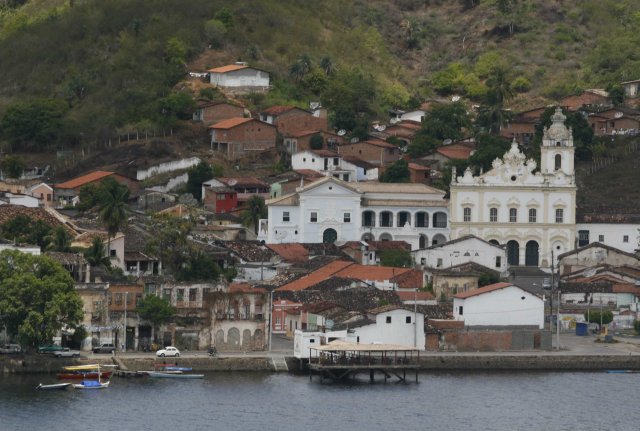Este post também está disponível em:
Português
English
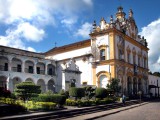
The city of Cachoeira is considered a National Monument, listed by the National Historical and Artistic Heritage Institute in 1971, the municipality of Cachoeira, located in the southern recôncavo, after Salvador, is the Bahian city that brings together the most important architectural collection in the Baroque style and the largest independent cultural site in Brazil.
During the 18th and 19th centuries, the wealth generated by sugar cane and tobacco gave Cachoeira power and prestige, which were reflected in the refinement of the buildings of that period in the city, considered at the time, the second most important in Bahia.
Cachoeira in the Recôncavo Baiano was the seat of government during the War of Independence. There were organized and trained the battalions that fought in Salvador and Cachoeira against the Portuguese attacks.
View the map of Baía de Todos os Santos
Maria Quitéria de Jesus Medeiros, who fought dressed as a man, stood out in this war. Another illustrious daughter of Cachoeira was Ana Néri (1814-1880), the first woman to graduate as a nurse in the country, who participated in the Paraguayan War.
The city had great importance in the state’s economy also due to its tobacco industry.
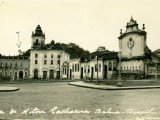
From the second half of the 19th century, factories installed on the other bank of the Paraguaçu River, where the city of São Félix is located today, such as Vieira de Melo, Costa Ferreira & Penna, Dannemann, Suerdieck, Pimentel and Cia. de Charutos Pook produced high quality cigars.
After the end of the sugar cycle at the beginning of the 20th century, the city switched to trading less profitable agricultural products. The expansion of the light-smoke industry (cigarettes) led to a worsening of the crisis with a reduction in the production of dark smokes (cigars and cigarillos). The only remaining cigar factory is Dannemann, in São Félix, which exports cigars.
In 1971, Cachoeira was listed for its 18th- and 19th-century architectural complex, in baroque and neoclassical style.
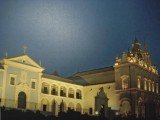
Unfortunately, a good part of this heritage is in ruins. Government investments for the recovery of these historical relics have been released drop by drop. Recently, the Carmo Convent, the First Order of Carmo and the Church of the Third Order of Carmo were restored.
Works have also been carried out on the Church of Our Lady of the Sacred Heart of Monte Formoso (known as the Church of the Rosary of the Blacks).
Pretos). The iron bridge over the river Paraguaçu, which links Cachoeira to São Félix, built at the behest of Emperor Pedro II, who imported it from England, is not in good condition. If you’re driving, take it easy, as the ground is covered with planks (some loose). If you’re on foot, watch your step.
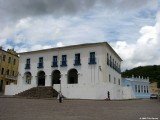
The city is famous for its many candomblé terreiros. Its religious and June festivals are monumental, with masses, processions, lectures, typical foods and samba-de-roda.
Don’t be surprised to hear visitors speaking French, English, Spanish, German or even Japanese.
At festival times, everything is crowded, but some locals rent out rooms in their homes. Find out more at the Tourist Information Office on Rua Ana Néri, next to the main church.
Cachoeira can be reached by car. Buses leave every hour from Salvador, where day trips via Santo Amaro are also available. Cachoeira and São Félix, with a visit to the cigar factory.
Videos about History and Tourism in Cachoeira BA
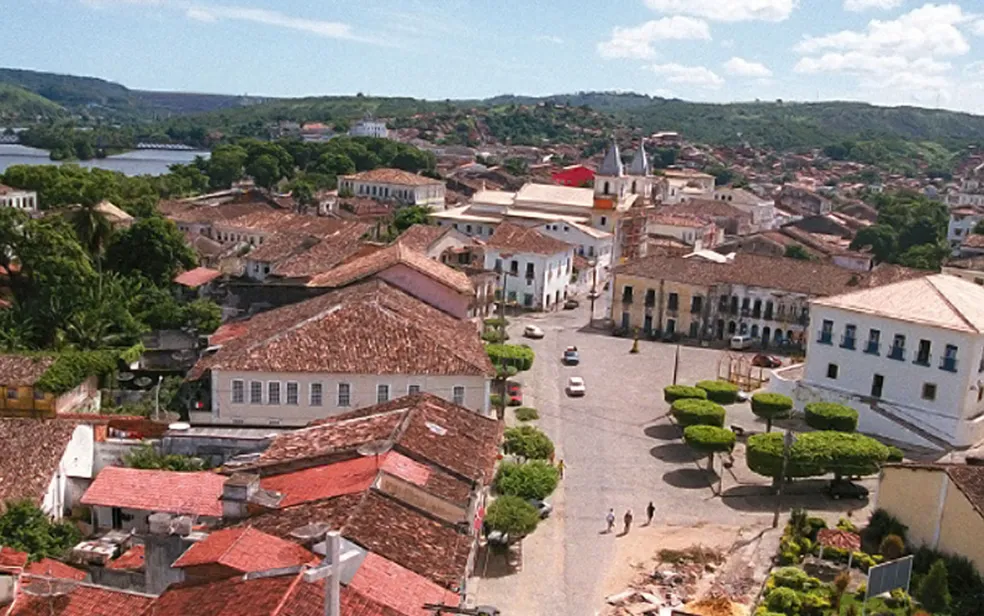
Tourist Spots and History of Cachoeira BA
- Hansen Bahia Museum
- Igreja Matriz Nossa Senhora do Rosário
- Irmandade Nossa Senhora da Boa Morte
- Santa casa de Misericórdia and Chapel of Santa Bárbara
- House of the Chamber and Jail
- Imperial Fountain
- Ajuda Church
- Igreja da Ordem Terceira do Carmo
- Casa de Oração da Ordem Terceira do Carmo
- Dannemann Cigar Factory
- Hansen-Bahia House
1. Hansen Bahia Museum
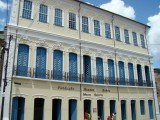
Karl Heinz Hansen (1915-1978) was born in Hamburg, Germany. He made a career as a visual artist in Sweden, where he held exhibitions and film scripts. He came to Brazil in 1950, worked in São Paulo and then, falling in love with Bahian culture, settled in São Félix, where he adopted the name Hansen-Bahia.
A versatile artist, he worked in various fields such as painting, illustration, engraving, woodcut, sculpture, cinema and poetry. He exhibited his works at the Museum of Modern Art in Babia. Belo Horizonte, Rio de Janeiro and São Paulo. In 1967 he released an album of prints entitled Via Crucis do Alemão e Brasileiro, with text by Jorge Amado and dedicated to Mãe Senhora, ialorixá of the terreiro Ylê Axé Opô Afonjá.
Works of Hansen-Bahia are exhibited in museums around the world, such as the Hermitage in St. Petersburg; the Albertina in Vienna; the Musée de l’Homme in Paris; the Library of Congress in Washington; and others in Germany and Israel
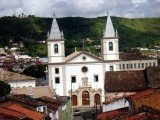
2. Igreja Matriz Nossa Senhora do Rosário
The beautiful 17th-century church, which has been listed and restored, has a gateway covered in Lioz marble.
The Portuguese tile panels lining its interior are among the largest in the country.
The church houses the Museum of the Alfaias whose collection consists of sacred images, gold and silver pieces and religious vestments.
3. Irmandade Nossa Senhora da Boa Morte
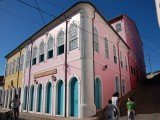
The Brotherhood was conceived by black women, slaves who, prevented from practicing their religion, joined together in an Afro-Catholic brotherhood to venerate Our Lady of Good Death, who syncretized their gods and orixás.
To belong to the sisterhood, women must be linked to a candomblé house, which can be Gêge, Ketu or Nagô Batá.
At the headquarters of the Brotherhood there is a chapel and a memorial with photographs, objects used in African cults and the image of Nossa Senhora da Boa Morte, whose feast takes place in August.
4. Santa casa de Misericórdia and Chapel of Santa Bárbara
The baroque building from 1734 houses the chapel, which has a rococo altar.
5. House of the Chamber and Jail
The restored building from 1698 houses the town hall.
6. Imperial Fountain
Built in 1827 to supply the city with water, it has a neoclassical style. It is decorated with seven frowns and the arms of the Empire.
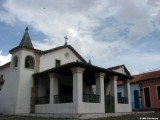
7. Ajuda Church
The Ajuda Church, also known as the Church of the Good Death, was the first church built in Cachoeira, the Ajuda Chapel has its origins in the construction of a small chapel in honor of Nossa Senhora do Rosário, between 1595 and 1606. It was only in 1637 that it was raised to the status of a parish church in honor of Our Lady of Help, in a reconstruction work that included the nave, the copy, the main chapel, the sacristy and the bell tower.
The primitive artistic painting of the dome, in red on a light ochre background and black friezes, one of the first in tempera on mortar made in Brazil, is one of the secular highlights of the construction.
8. Igreja da Ordem Terceira do Carmo
This building dates from the early 17th century. The interior is covered with Portuguese tiles; the altars are in Baroque style.
9. Casa de Oração da Ordem Terceira do Carmo
The complex, consisting of a chapel, table room, cloister and cemetery, began to be built in 1702 on land donated to the Carmelites by João Rodrigues Adorno. Today, the site houses a Sacred Art Museum.
10. Carmo Convent
As with the Carmelite convent in Salvador, the building was converted into a guesthouse and restaurant.
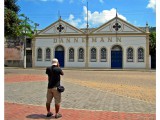
11. Dannemann Cigar Factory
The factory inaugurated in 1873 by the German Gerhald Dannemann still produces high quality cigars, comparable to Cubans, handmade by women, who pass their knowledge from generation to generation.
The building, which houses the Biennial of the Recôncavo, houses a cultural center.
12. Casa de Hansen-Bahia
A casa onde morou o artista, conservada conforme ele a deixou, é agora um museu com acervo de quatro mil obras no qual a população local tem
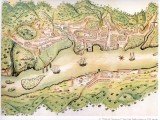
acesso a atividades artísticas e cursos. No jardim há um memorial onde estão depositadas as cinzas do pintor e os restos mortais de sua mulher, Ilse.
O espaço recebe mais de 10 mil visitantes ao ano e a exposição é trocada sempre em 19 de abril, dia do aniversário de Hansen Bahia. Para quem quiser levar uma lembrancinha, há camisetas, DVDs e catálogo de obras à venda.
Bahia.ws é o maior guia de turismo e viagem da Bahia e Salvador.
